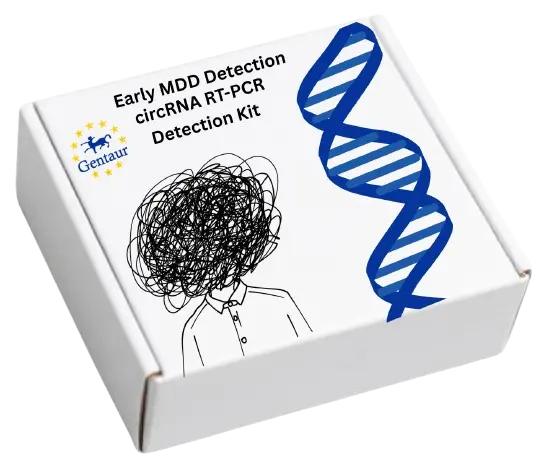Introduction to Major Depressive Disorder (MDD) and New Therapeutic Approaches
Major Depressive Disorder (MDD) is a common yet debilitating mental health condition, affecting millions worldwide. It significantly impacts emotional and social functioning, with treatment often involving antidepressants that fail to provide lasting relief for a third of patients. Recent research has pointed to the potential of circular RNAs (circRNAs) as promising therapeutic targets for MDD. Among these, circATF7IP has gained attention due to its elevated presence in MDD patients and its strong correlation with depressive symptoms.

Understanding CircATF7IP’s Role in MDD
CircATF7IP, a circular RNA, is found to be significantly upregulated in plasma samples from MDD patients. Studies indicate that it correlates directly with the severity of depressive symptoms, as measured by the Hamilton Depression Rating Scale (HAMD-24). This makes circATF7IP an attractive biomarker for diagnosing and predicting the treatment response in MDD.

Lipid Nanoparticles: A Breakthrough in RNA Therapeutics
The delivery of RNA-based therapeutics, such as siRNA, to the brain has been a challenge, primarily due to the blood-brain barrier (BBB) that limits effective treatment. Lipid nanoparticles (LNPs), a proven RNA delivery system, have been modified to overcome this barrier, enabling better targeting of the brain. Recent advancements have introduced Synergistic Amine Lipid Nanoparticles (SALNPs) designed to enhance the delivery of siRNA targeting circATF7IP to the hippocampus, a region crucial for mood regulation.

Salient Findings: Intranasal Delivery for Effective Treatment
A novel approach in this study involves intranasal delivery of SALNPs encapsulating si-circATF7IP. This method offers a non-invasive, efficient means to bypass the BBB, facilitating rapid therapeutic responses. Intranasal administration of SALNP3-si-circATF7IP in mice models alleviated depressive-like behaviors, as evidenced by behavioral tests such as the sucrose preference test, tail suspension test, and forced swim test. The treatment showed promise by reducing pro-inflammatory cytokines such as TNF-α and IL-6, which are often elevated in MDD patients.
Impact on Microglia and Neuroinflammation in MDD
One of the major findings of this study is the ability of SALNP3-si-circATF7IP to inhibit microglial activation in the brain. Microglia, the immune cells of the central nervous system, play a pivotal role in neuroinflammation associated with depression. The downregulation of circATF7IP was shown to reduce microglial activation, thus contributing to decreased neuroinflammation and improved behavioral outcomes in the MDD mouse model.
Potential for Human Clinical Applications
The ability to target circATF7IP in human MDD patients using SALNPs presents a new frontier in antidepressant therapies. This approach not only promises improved delivery of siRNA to the brain but also avoids the systemic side effects commonly associated with conventional treatments. Clinical trials are ongoing to assess the therapeutic efficacy of SALNP3-si-circATF7IP in humans, with the potential to offer a non-invasive, highly targeted treatment option for MDD.
Future Directions in MDD Treatment
The innovative use of SALNPs for the delivery of circATF7IP siRNA marks a significant advancement in MDD therapy. By targeting the root cause of neuroinflammation and circRNA dysregulation in the brain, this approach offers a new hope for those suffering from treatment-resistant depression. Future research will focus on refining the SALNP formulation and conducting clinical trials to validate its efficacy in human patients.